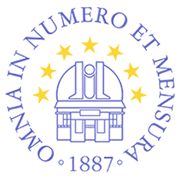These evenings, until the end of January and the beginning of February, astronomy enthusiasts will have the chance to witness a rare celestial event. Six planets of the Solar System will be visible simultaneously in the night sky.
Venus, Saturn, Neptune, Uranus, Jupiter, and Mars will be observable—either with the naked eye or with the help of binoculars or a telescope—throughout the upcoming winter nights. This unique astronomical phenomenon occurs approximately once in a hundred years, making it a special moment for all lovers of the night sky.
Live Planetary Observation from Vidojevica
The Astronomical Observatory in Belgrade invites you to a public online observation of this phenomenon on Monday, January 27, starting at 6:00 PM. The observation will take place at the Vidojevica Astronomical Station, weather permitting.
The event, titled "Planetary Marathon," will last about an hour and will be conducted using a 40 cm telescope. The live broadcast will be available via video link, with commentary provided by the station's on-duty astronomer.
The event will be streamed on the YouTube channel of the Astronomical Observatory in Belgrade (https://www.youtube.com/watch?v=1TK8bwAqznY). This activity is organized by the Astronomical Observatory in cooperation with the Ministry of Science, Technological Development, and Innovation.
The Meade 40 cm telescope, installed in 2019, serves both for professional photometric observations and collaboration with amateur astronomy societies, aiming to popularize astronomy in Serbia.
The observation station is located on Vidojevica Mountain, near Prokuplje, at an altitude of 1,155 meters. The minimal light pollution in the area makes it one of the best locations for astronomical observations in the region.
What Makes This Event Special?
This rare occurrence is the result of complex celestial mechanics, where the planets align in positions along their orbits around the Sun that allow for their simultaneous visibility from Earth.
Venus, Mars, Jupiter, and Saturn will be visible to the naked eye, while Uranus and Neptune will require a small telescope. Although Mercury—being the smallest and closest planet to the Sun—is typically difficult to observe due to its proximity to the Sun, this event will be remarkable even without it.
The first planets to be observed will be Saturn, Venus, and Neptune, which will set shortly after the event begins. Uranus will remain visible until midnight, Jupiter until around 2 AM, while Mars will grace the sky until dawn.









































